
Black holes are some of the most mysterious objects in the universe. Yet scientists can learn plenty about black holes by examining their environments, the conditions their intense gravity generates, and the jets of matter they blast out at near light speed.
Here are the most impressive, extraordinary and shocking black hole stories of 2023.
1. One of the biggest supermassive black holes
In March, researchers revealed that they had found what may be one of the most massive black holes ever discovered. The cosmic titan sits at the heart of the elliptical galaxy Abell 1201 BCG, located 2.73 billion light-years from Earth, and the galaxy itself is in a massive cluster of galaxies called Abell 1201.
The Abel 1201 BCG black hole is believed to have a mass equivalent to 32.7 billion suns and was discovered through the effect of its gravitational influence on space.
"This particular black hole, which is roughly 30 billion times the mass of our sun, is one of the biggest ever detected and on the upper limit of how large we believe black holes can theoretically become, so it is an extremely exciting discovery," study leader James Nightingale, a physicist at Durham University in the U.K., said in a statement.
2. Supermassive black hole seeds in the early universe
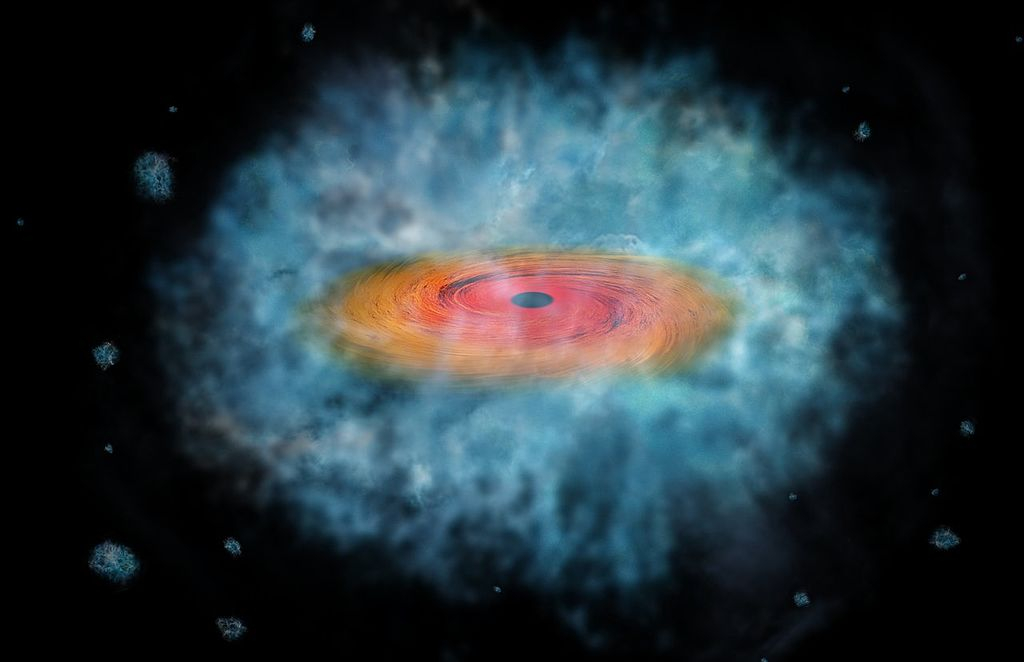
For many years, scientists have pondered how supermassive black holes reach such tremendous sizes. This is particularly challenging when supermassive black holes with millions or billions of times the mass of the sun are discovered in the early epoch of the universe, when they would not have had time to feed on matter or even merge with other black holes enough to reach such titanic masses.
"It's like seeing a family walking down the street, and they have two 6-foot teenagers, but they also have with them a 6-foot tall toddler," John Reagan, a research fellow at Maynooth University who was not involved in the research, told Space.com.. ”
In August, astronomers discovered evidence of how this process may get a head start, finding "heavy seeds" of black holes with masses around 40 million times that of the sun in the universe just 400 million years after it began. These so-called outsize black hole galaxies are believed to form directly from massive clouds of gas and dust, rather than from dying stars, saving billions of years on the path to supermassive status.
3. Supermassive black hole merger close to Earth
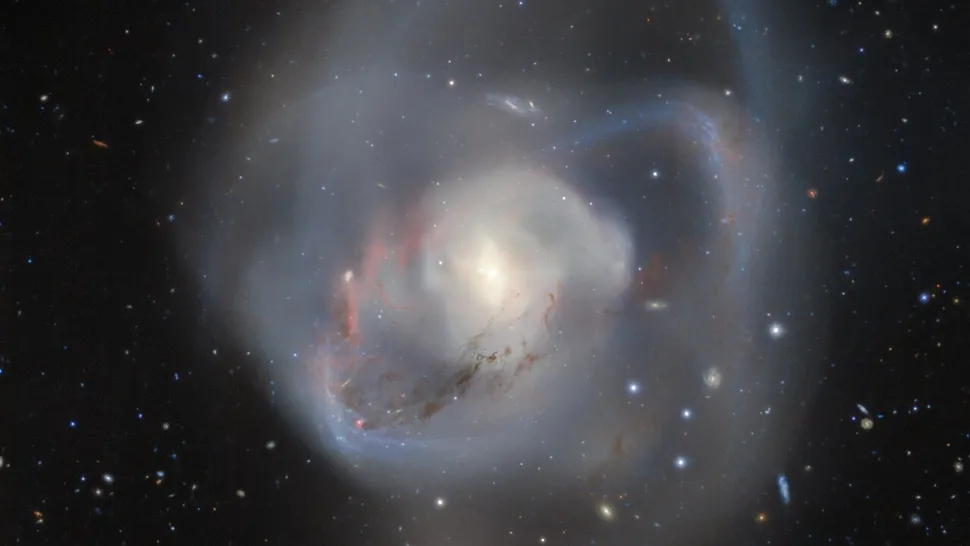
In October, astronomers discovered a supermassive black hole binary system in the aftermath of two merging galaxies. At just 90 million light-years away, it's the closest pair of supermassive black holes to Earth yet discovered.
The black holes have masses 54 million times that of the sun and 6.3 million times that of the sun, respectively. Currently, they orbit each other at a respectable distance of 1,600 light-years. But in around 250 million years, they will spiral together and merge, just as their parent galaxies did 1 billion years ago, creating a daughter supermassive black hole with a combined mass of around 60 million solar masses.
4. Gravitational wave detector's quantum boost
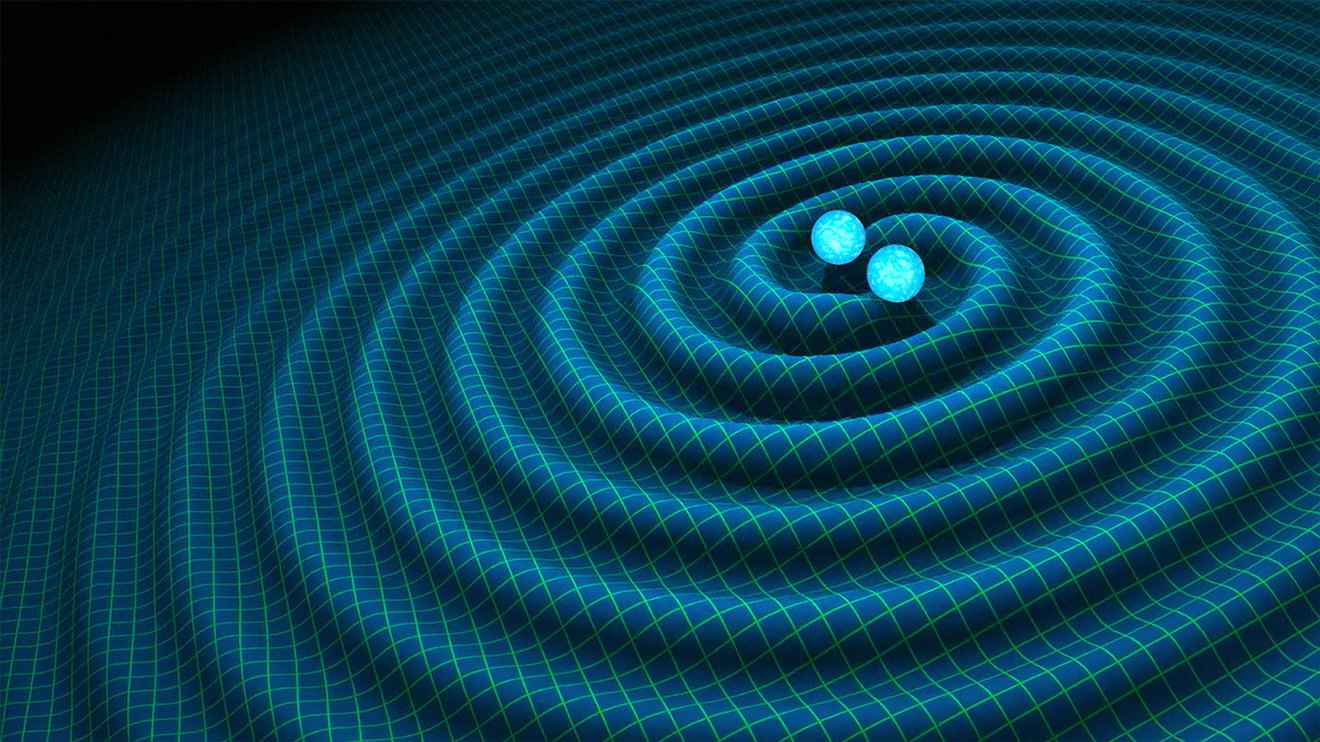
As black hole mergers occur, they set space-time ringing with tiny ripples called gravitational waves, which were first predicted in Einstein's 1915 theory of general relativity.
What Einstein didn't predict was that gravitational waves would one day be detectable here on Earth. This detection of space-time ripples got a major boost in October, when the Laser Interferometer Gravitational-Wave Observatory (LIGO) got an upgrade that will push beyond the so-called "quantum limit," allowing it to detect even smaller undulations in space from even more distant black hole mergers.
"We can now reach a deeper universe and are expected to detect about 60 percent more mergers than before," LIGO lab researcher Wenxuan Jia told Space.com. "The upgrade also increases our chances of detecting sub-stellar mass black holes in the universe. The latest experimental upgrade will benefit our detection of astrophysical signals in nearly every way."
5. Echo of supermassive black hole's monstrous "burp"
In June, NASA's Imaging X-ray Polarimetry Explorer caught the echoes of an outburst from our galaxy's supermassive black hole, Sagittarius A* (Sgr A*). Sgr A* is believed to have belched this high-energy light around the turn of the 19th century, and scientists caught its echo in the form of X-rays shining from dense molecular clouds of gas surrounding the center of the Milky Way and birthing new stars. The 200-year-old burst of radiation is believed to be the result of a chunk of an asteroid, a gas cloud or a star venturing too close to Sgr A* and being shredded by the immense tidal forces generated by the supermassive black hole's intense gravity.
6. Black hole's AI makeover
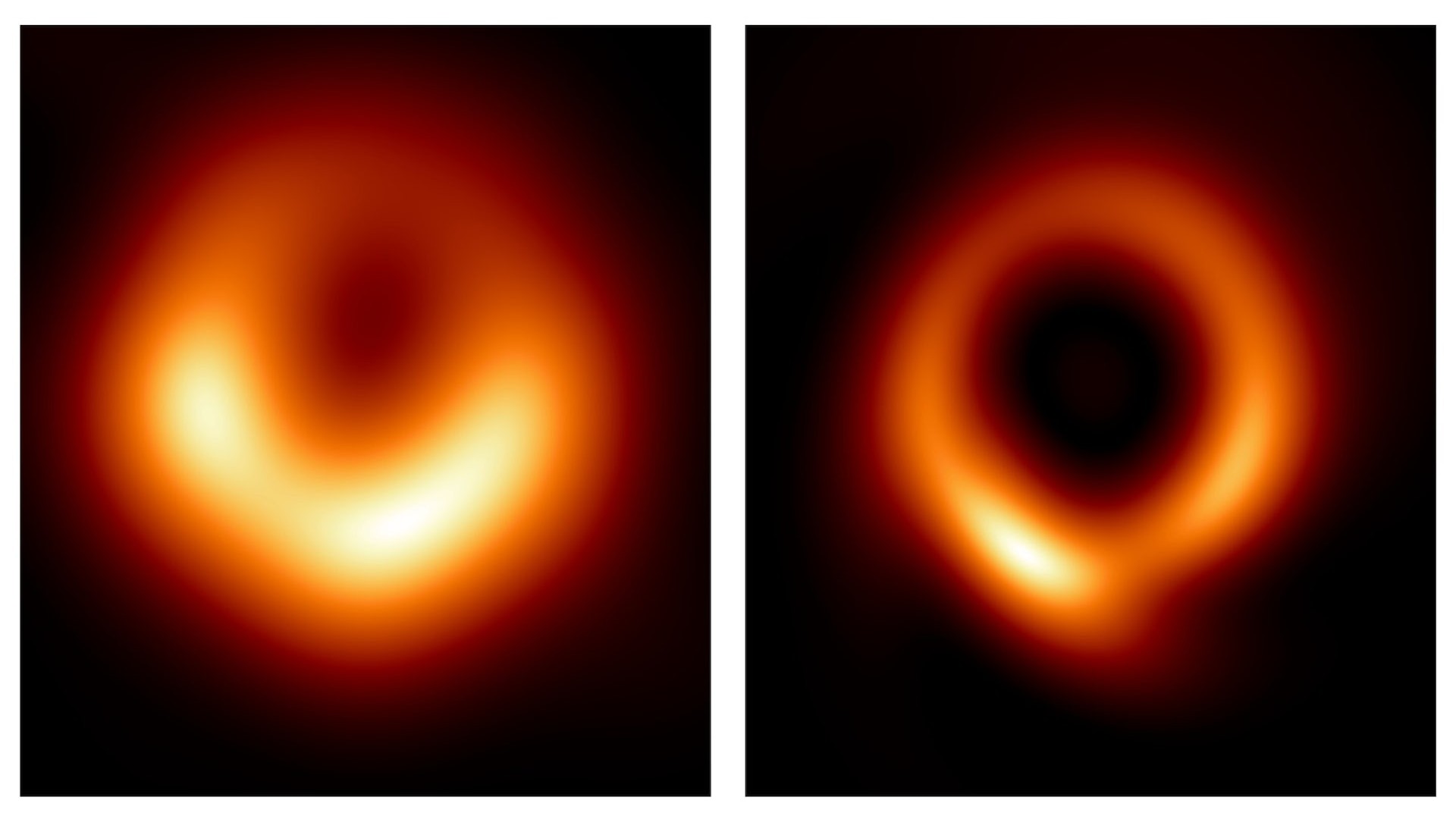
In April, the first-ever image of a black hole, dubbed the "fuzzy orange doughnut" because it is notoriously blurry, got a major makeover thanks to AI. To improve the sharpness of the image, researchers used a supercomputer running a machine-learning technique called principal-component interferometric modeling (PRIMO). This allowed them to fill in the gaps missed by the Event Horizon Telescope (EHT) when it captured the first image of the black hole in 2019 and to slim down the glowing ring of the supermassive black hole to learn more about it.
"PRIMO is a new approach to the difficult task of constructing images from EHT observations," Tod Lauer, an EHT member and NOIRLab researcher, said in a statement. "It provides a way to compensate for the missing information about the object being observed, which is required to generate the image that would have been seen using a single gigantic radio telescope the size of the Earth."
7. "Million-light-year-long Jedi lightsaber" from a black hole

In November, researchers studied the black hole Messier 87 and its jets to see how they release energy.
This energy isn't coming from within the black hole; the boundaries of black holes, called event horizons, prevent anything from escaping. Instead, the spinning of the black hole twists up magnetic fields, which slow its rotational speed, and then launches highly collimated jets of material that the team described as "million-light-year-long Jedi lightsabers."
"If you took the Earth, turned it all into TNT, and blew it up 1,000 times a second for millions and millions of years, that's the amount of energy that we're getting out of M87," said team member George Wong, a researcher at Princeton University.
8. 1st-ever direct image of a black hole jet (yes, M87* again!)
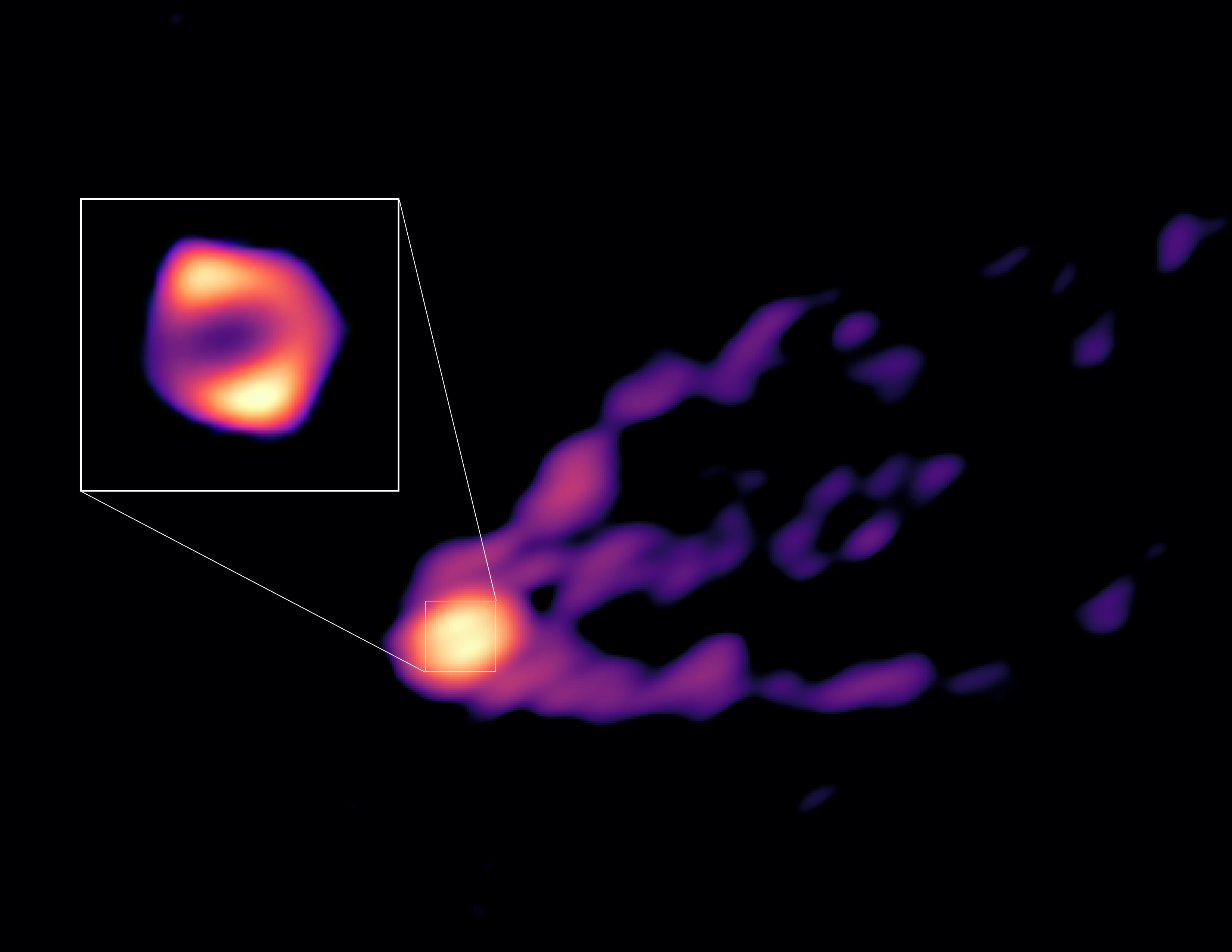
In April, a collimated blast of energy emerging from M87's supermassive black hole became the first black hole jet to be directly imaged.
The image shows for the first time how the base of the jet connects to matter swirling around the supermassive black hole and gradually being fed to it.
"We plan to observe the region around the black hole at the center of M87 at different radio wavelengths to further study the emission of the jet," team member Eduardo Ros, a scientist at the Max Planck Institute for Radio Astronomy, said in a statement. "The coming years will be exciting, as we will be able to learn more about what happens near one of the most mysterious regions in the universe."
9. Black hole pointed right at Earth
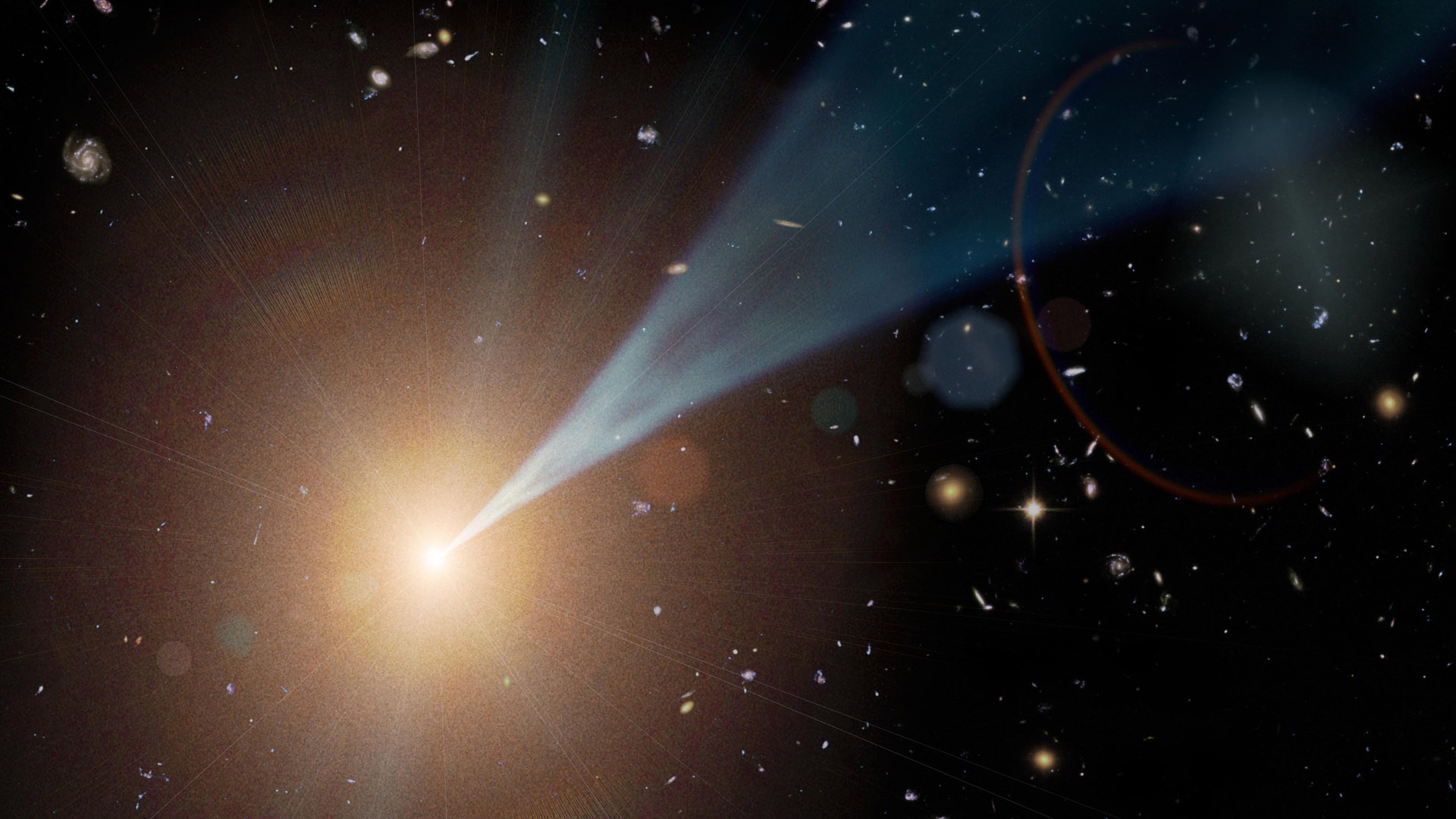
In March, astronomers watched for the first time as the jets launched from the active heart of a galaxy powered by a feeding supermassive black hole switched direction and pointed straight at Earth.
The galaxy, PBC J2333.9–2343, located around 656 million light-years from Earth, had been seen emitting jets but had appeared to fall quiet until firing up again and realigning its jet by 90 degrees to point at Earth. The team behind the observation described this as "a very exceptional case of jet reorientation."
10. Distant blazar
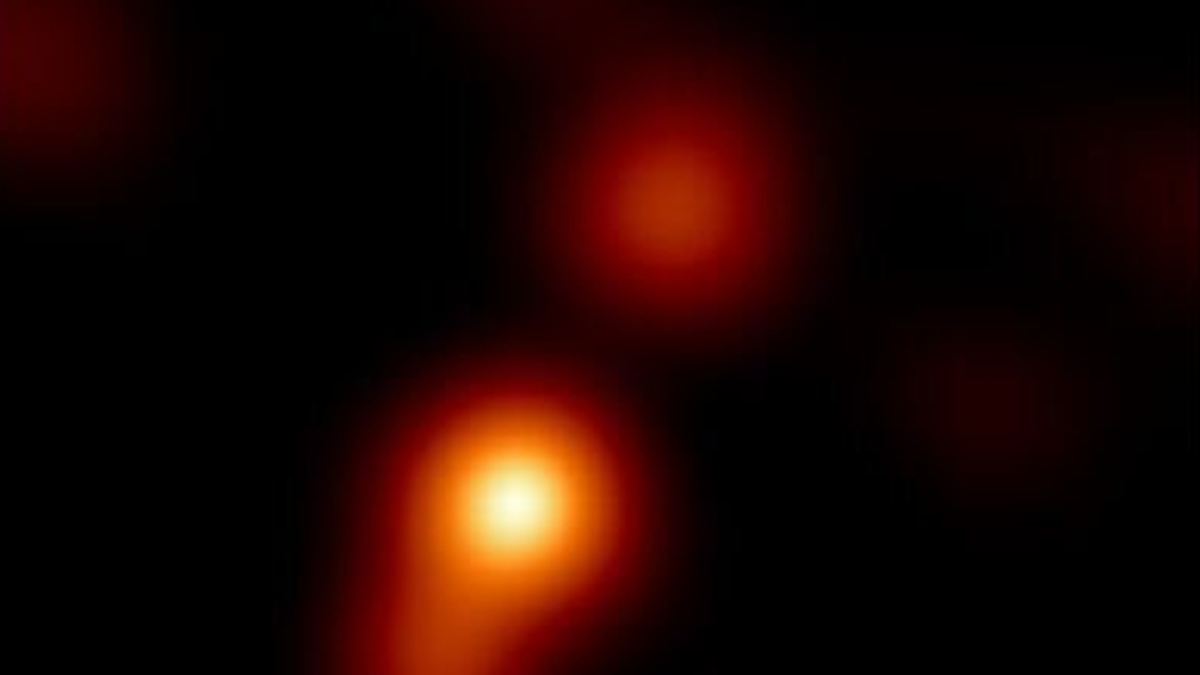
In February, the EHT collaboration revealed observations of the supermassive black hole-powered blazar at the heart of the galaxy NRAO 530. The blazar represents the most distant object the EHT has ever imaged.
"The light that we see traveled toward Earth for 7.5 billion years through the expanding universe, but with the power of the EHT, we see the details of the source structure on a scale as small as a single light-year," Maciek Wielgus, an EHT collaboration team member and a researcher at the Planck Institute for Radio Astronomy, said in a statement.
11. Supermassive black holes that "recycle"
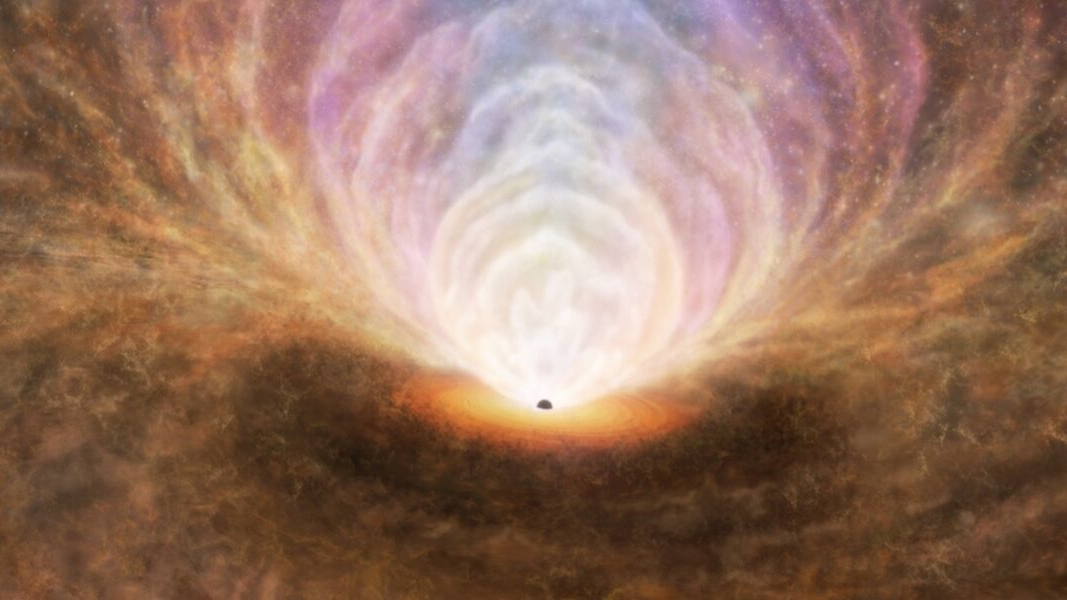
Scientists knew that supermassive black holes are messy eaters, but they didn't realize that black holes may have light diets because they "recycle" a lot of the material they fail to consume.
In November, astronomers discovered material engaged in an intricate dance around the supermassive black hole at the heart of the Circinus Galaxy, located around 13 million light-years away.
They found that the central black hole feeds on only around 3% of the material that falls toward it and the energy it generates pushes the rest away, meaning it is a much lighter eater than previously thought. That doesn't mean this matter keeps its distance, however; much of it falls back to the central supermassive black hole in an arrangement almost akin to a water fountain.
12. Back-to-back black role records
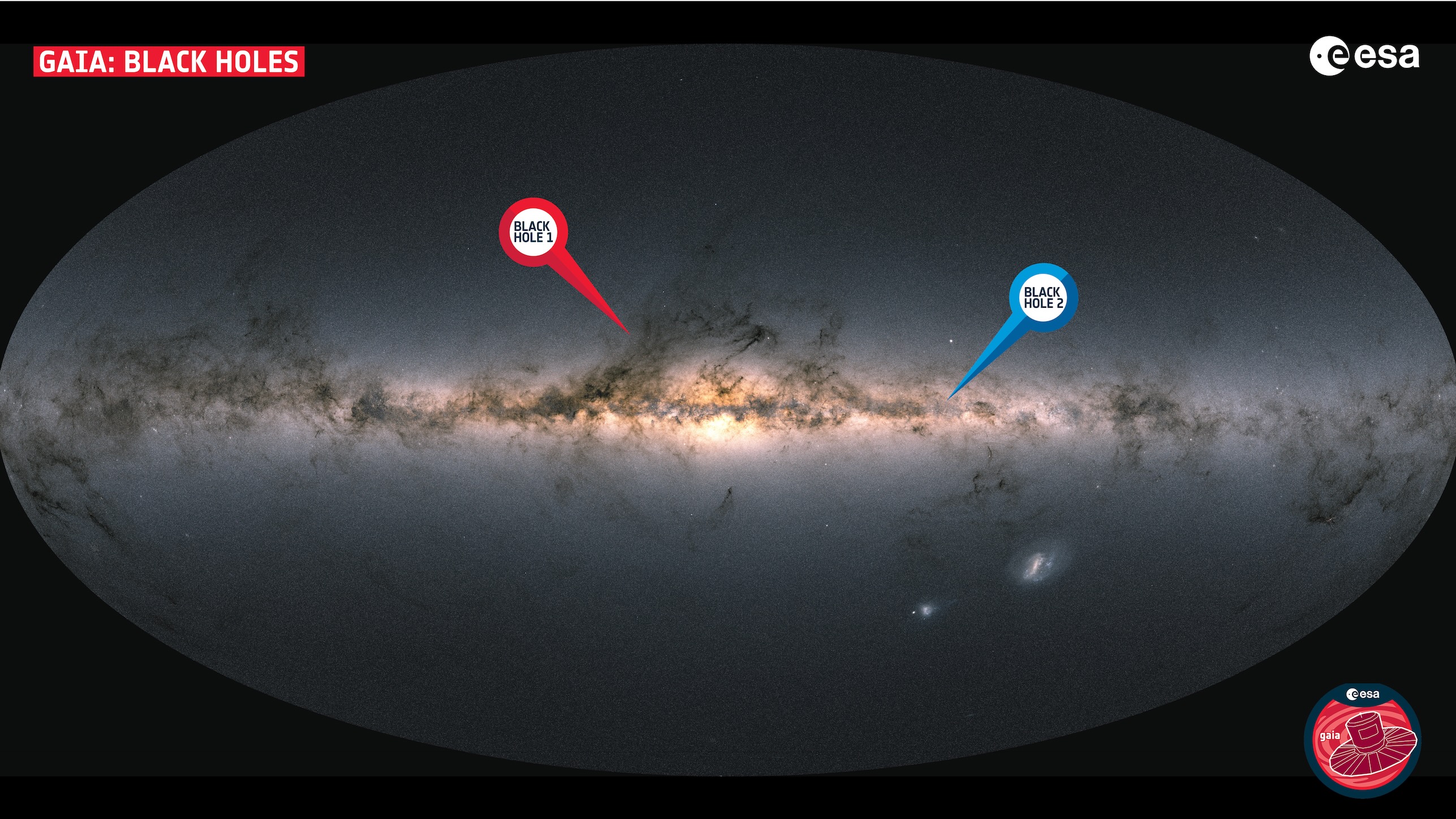
In April, astronomers used the Gaia spacecraft to discover what seemed to be the closest black holes to Earth. Designated Gaia BH1 and Gaia BH2, the black holes are located 1,560 and 3,800 light-years away, respectively.
But just a few months later, scientists discovered that there may be several black holes in the Hyades cluster, which, at just 150 light-years away, would make them 10 times closer than Gaia BH 1.
These two, or possibly three, black holes could be even more remarkable because they might not be in the dense star cluster at all but were ejected from the Hyades 150 million years ago to wander the Milky Way alone.







